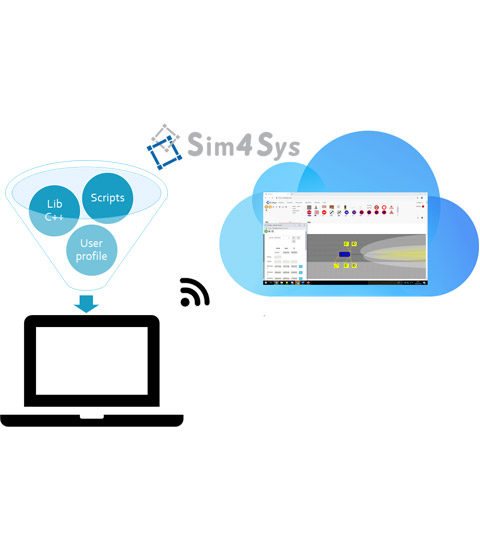CIL4Sys Engineering, a systems engineering services company that works with major French companies, joined forces with CEA-List on a software engineering venture. CIL4Sys Engineering integrated the Papyrus Eclipse UML software engineering environment developed by CEA-List into its Sim4Sys software platform.
Philippe Gicquel created CIL4Sys Engineering six years ago following a successful career in the automotive industry. CIL4Sys Engineering helps industrial companies use the functional design phase of their products to accelerate their innovation process. Today, large industrial projects are systems of systems. The electronics, mechatronics, and software used in these systems continues to grow, and designers need tools to design how these elements will function. This means describing each component, simulating its behavior, and then writing specifications for each of them—all long before CAD plays its part. CIL4Sys Engineering aims to accelerate this long process of functional design by adopting agile best practices. The Paris-based company currently employs around 15 people.
Part of CIL4Sys Engineering’s strategy was to offer a software-based digital prototyping platform—a tool for the implementation of the company’s methods. Sim4Sys, built on a UML (Unified Modeling Language) editor, was developed. Design engineers can use this graphical editor to describe the logical behavior of their system. After evaluating various UML editors available on the market, CIL4Sys Engineering selected the Papyrus platform developed by CEA-List and integrated into the Eclipse open source environment.

CIL4Sys Engineering’s uses Papyrus’ open source base with its own extensions. For example, CEA-List and CIL4Sys developed one extension to simulate how the modeled objects function and verify their behavior. Engineers need to confirm that what they have modeled functions as intended as the design work progresses. This extension meets that need. The ability to model and test the design as it advances is part of a typical agile design cycle. In this cycle, engineers can also quickly correct their design, improve it, and present their models to other project team members to accelerate progress.
After evaluating Papyrus, we worked with the CEA-List project team to develop the UML editor as a joint innovation and deliver the software solution we wanted to offer to our customers.
Development on Sim4Sys began in 2017. CIL4Sys Engineering quickly signed a contract with CEA-List to develop additional features to enhance Papyrus while remaining within the terms of the open source license. These custom developments have been transferred to the Papyrus Eclipse open source project and are now available to the entire community.
Sim4Sys was officially launched in 2020, with design offices in major French industrial companies becoming its first users.
Software engineering, an emerging part of CIL4Sys Engineering’s strategy, is set to grow strongly in the coming years. The company’s founder has ambitious plans to develop this offer. Sim4Sys is positioned at the start of the design V-cycle, from gathering requirements to writing component specifications. To cover more of the V-cycle, Philippe Gicquel is considering working with a partner that makes a 3D simulator implemented in HIL benches, a solution that generally comes into play at the bottom and top of the V-cycle.
